Sound: 









Value: 









(Read about our ratings)
Measurements can be found by clicking this link.
 What do you do after you’ve created the perfect audio product? Most audiophiles would counter that there is no perfect audio product, but I wonder. There are plenty of component categories—amplifiers, preamps, cables, and others—in which the best from 30 years ago are 100 percent sonically competitive with anything made today. And one possible definition of perfection is that your work can’t be improved upon. Focal’s original Utopia headphones, introduced in 2016, were probably as close as anyone’s come to perfection in headphones—but at the 2022 CanJam SoCal, Focal announced that it had improved on the Utopias. The new model is still named Utopia ($4999, all prices USD), but to distinguish it from the old model (which we’ll be referring to frequently), we’re going to refer to it in this review and the measurements as Utopia 2022.
What do you do after you’ve created the perfect audio product? Most audiophiles would counter that there is no perfect audio product, but I wonder. There are plenty of component categories—amplifiers, preamps, cables, and others—in which the best from 30 years ago are 100 percent sonically competitive with anything made today. And one possible definition of perfection is that your work can’t be improved upon. Focal’s original Utopia headphones, introduced in 2016, were probably as close as anyone’s come to perfection in headphones—but at the 2022 CanJam SoCal, Focal announced that it had improved on the Utopias. The new model is still named Utopia ($4999, all prices USD), but to distinguish it from the old model (which we’ll be referring to frequently), we’re going to refer to it in this review and the measurements as Utopia 2022.
As Focal’s Mégane Montabonel explained to me, the new Utopias are similar to the originals, but upgraded in numerous subtle ways. They switched from an aluminum voice coil to one made from a combination of aluminum and copper to make it more reliable. There’s a new grille design on the outside (the Utopias are an open-back model) designed to reduce acoustical impedance and make the sound more open. The grilles in front of the drivers have been reshaped to more closely follow the shape of each driver, minimizing internal reflections and shifting them to higher, inaudible frequencies. The yokes that hold each earpiece are said to be stronger because they’re made from forged carbon instead of carbon fiber.
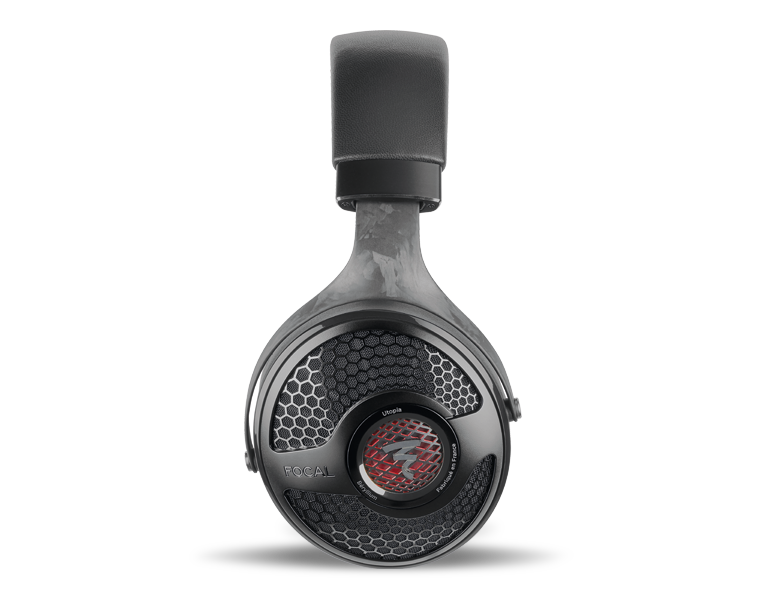
Otherwise, the design carries on several features of the original Utopia headphones, and of most of Focal’s higher-end models as well. The core is an ultra-light, ultra-stiff, 40mm beryllium diaphragm, attached to the frame with a lightweight suspension that is somewhat like the surround on a speaker, and more compliant than the simple mylar suspension found on most dynamic headphone drivers. The diaphragm has an “M” shape, which makes it flatter; Focal claims this design is stiffer than the usual “V” shape.
As with the original, impedance is rated at 80 ohms, which is just a little high, and sensitivity at 104dB with a 1mW signal, which is very high for high-end headphones. I’ll be confirming both of these figures (or not) in the measurements section, available from the top of this page, where you’ll also be able to see how the Utopia 2022s compare with the original Utopias. Normally, I’d say pay more attention to my listening impressions than to the measurements, but in this case, my Audiomatica Clio 12 analyzer’s memory of the original Utopias is perfect, and my own memory is, sadly, quite compromised—as it is for every human being trying to recall how something sounded years ago.
In the box
The Utopia 2022s get the same luxe accommodations as the originals did: a carrying case made from formed plastic covered in gray tweed fabric. Two cables are included: a 10′ (3m) cable with a balanced four-pin XLR connector on the source end and snap-in LEMO connectors on the headphone ends, and a 4′ (1.2m) cable with a 1/8″ (3.5mm) plug on the source end and a 1/8″-to-1/4″ (3.5mm-to-6.35mm) adapter. So you’re covered for home or mobile listening.
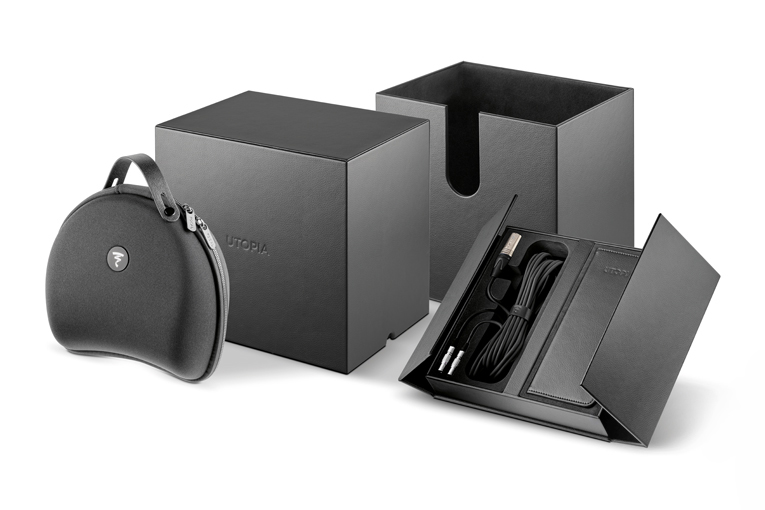
Use
As with the original, the Utopia 2022s are quite comfortable. They’re perhaps a bit on the heavy side (although not troublesomely so), but the foam is fairly soft and the clamping force is light—yet not so light that they fell off my head easily. The ear openings are large enough even for plus-size pinnae like mine.
I expect most enthusiasts will insist that the Utopia 2022s need partnering with some fancy-schmancy amp, but this isn’t the case at all. Even with the headphones plugged straight into my Samsung Galaxy S10 phone, I got them cranking to an appropriately intense level playing “I Advance Masked,” the title track from the at-long-last rereleased 1982 album of awesome, minimalist instrumentals by Andy Summers and Robert Fripp (I Advance Masked, 320kbps Ogg Vorbis, A&M Records / Spotify).
Sound
As this is my last review for SoundStage! Solo—and, possibly, my last single-product review ever—I thought I’d stick with my favorite reference tunes, the ones that carried me from my 1995–1999 gig as editor of Home Theater magazine to the present day. You could say they’re some of my best friends!
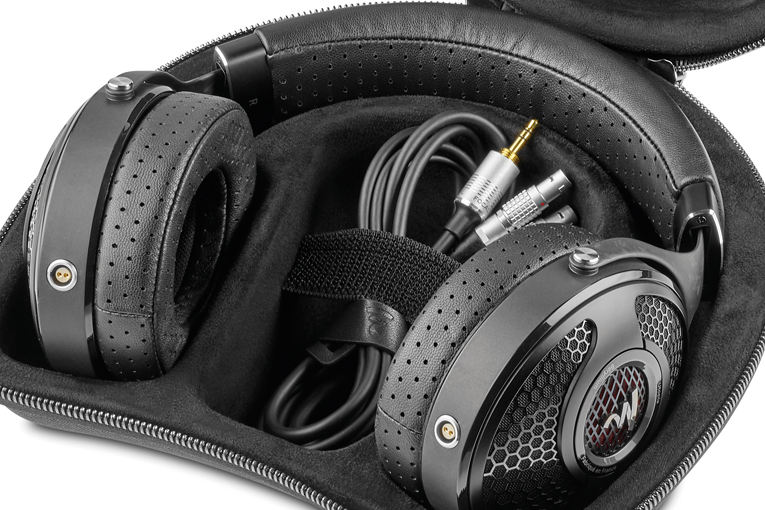
My all-time favorite, I think, is the one that happened to come up on Qobuz the first time I listened to the Utopia 2022s—Holly Cole’s version of the Tom Waits tune “Train Song” (Temptation, 16-bit/44.1kHz FLAC, Blue Note / Qobuz). I first saw Cole perform on a rainy summer night in Chicago in 1993, at a show sponsored by Audio Products International (the original maker of Mirage and Energy speakers). I became an instant fan, and have bought all her albums since—and not a few of the albums from the many artists who’ve copied her act. I’ve listened to this tune on way more than 1000 pieces of audio gear, and mentioned it in probably hundreds of reviews. I don’t know if what I heard through the Utopia 2022s was the best rendition of this tune I’ve heard, but it was as good as I’ve heard through headphones.
This tune has, in essence, three parts: a strong double-bass line, Cole’s voice, and several percussion instruments skittering across the stereo soundfield. Many audio systems get the bass wrong: they distort or boom. Or they make Cole’s voice sound too thin, or too dull. Or most noticeably of all, they accentuate the percussion instruments so they overpower everything—or they dull them to the point where some of the excitement is lost. With the Utopia 2022s, not only was the bass line rendered with what I—having heard this on a zillion systems—consider essential perfection, but Cole’s voice sounded as natural, uncolored, and present as I’ve ever heard it. The percussion seemed to be reproduced with a just-right balance of mids and highs, although I do have to say I’ve heard headphones that produce a greater sense of space on this tune—mostly planar-magnetic models with accentuated treble.
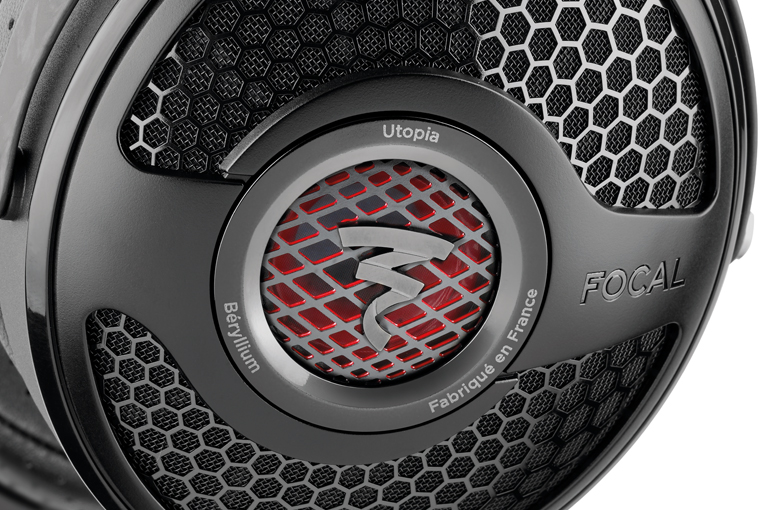
Next up, what I’ll call an “exclusive” track, only because it’s not commercially available in a stereo-only version—you have to copy it digitally. It’s the version of “Shower the People” from the 2.0 soundtrack of James Taylor’s Live at the Beacon Theatre DVD (16/44.1 WAV, Sony). I first heard this one when I did a speaking tour of audio dealers, co-sponsored by Home Theater magazine and Krell Industries. Krell’s then-VP, Bill McKiegan (now president of Dan D’Agostino Master Audio Systems), used it to demo the company’s 5.1 gear. (“Shower” sounds even better in 5.1, but that’s not really applicable to headphones.) It’s one of the most revealing recordings I’ve ever heard; once, a president of an audio licensing company called it “unfair” when I used it to test his technology.
Through the Utopia 2022s, “Shower the People” sounded probably as perfectly balanced as I’ve heard it, with the bass carrying the groove beautifully, yet not being so loud that it overwhelmed the soft glockenspiel notes that introduce and accent the chorus. It was very easy to distinguish all the parts: the electric guitar, Taylor’s beautiful-sounding acoustic, the four backing vocalists, the piano, the percussion, and the drums. Nothing was accentuated, and I loved that because it’s not what I’m used to hearing; often there’s too much bass, or the vocals stomp all over everything. As with “Train Song,” the Utopia 2022s didn’t produce as big a sense of space as I’ve heard from some other headphones, though.
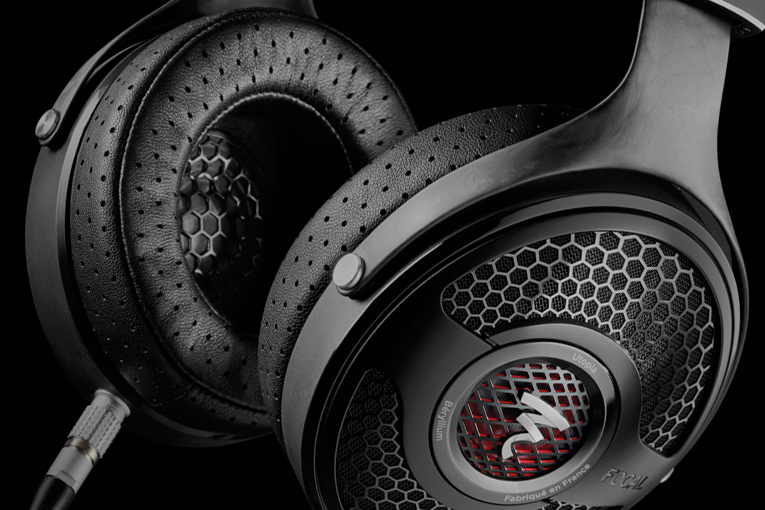
Maybe the best soundstaging test I’ve heard is “I Only Have Eyes for You,” a horns-plus-drums rendition of the old doo-wop standard by Lester Bowie’s Brass Fantasy (I Only Have Eyes for You, 16/44.1 FLAC, ECM Records / Qobuz). The first time I ever played this was on an Atlantic Technology THX speaker system, with Atlantic’s then-president, Peter Tribeman, and a former audio writer whose name I haven’t mentioned since he threatened to sue me about 25 years ago. All of us sat, transfixed and silent, for the entire 10:29 running time of the track. For decades, I imagined this was recorded in some huge European cathedral, but then I read it was done in a Brooklyn studio, and what I thought was sound echoing off centuries-old stonework was apparently just digital reverb. Oh, well—it’s the perceived awesomeness that counts.
One thing I listen for on this recording is the splash cymbal that introduces the melody. This is a small cymbal used for accents, and its bandwidth is way up in the high frequencies, which makes it useful for tweeter testing. Weirdly, the splash cymbal was really not there with the Utopia 2022s. But everything else sounded kinda—to bring back that word again—perfect. What struck me was the natural tonality of all the horns, including trumpets, a French horn, trombones, and a tuba. All of them sounded gorgeous, full, detailed, and powerful, as if I were hearing top-notch players (true) in a world-class performance space (not true). I ended up listening for at least half an hour to this one track because it sounded so live, so inspired. And no, it didn’t sound as spacious as I’ve heard it sound through certain headphones, but still, I got a strong sense of the (fake) reverberance. By the way, if you haven’t heard this recording, please give it a spin on your streaming service of choice.
Back in my first ten or 15 or 20 years of reviewing, I didn’t listen to much classical music. But through learning double bass; reading Jan Swafford’s 2017 book, Language of the Spirit: An Introduction to Classical Music; and reading the very accessible and informed reviews by Jason Victor Serinus in Stereophile and Anthony Kershaw on Audiophilia.com, I’ve gotten into it a lot more over the last several years. Perhaps my fave is Hilary Hahn’s Paris (24/96 FLAC, Deutsche Grammophon / Qobuz), in particular the II. Scherzo: Vivacissimo movement of Prokofiev’s Violin Concerto No. 1 in D major, Op. 19—a frantic movement in which Hahn digs into her axe like some unholy combination of Jimmy Page, Adrian Belew, and James “Blood” Ulmer.
The weird thing for me was how this movement just seemed to pass over me when I heard it through the Utopia 2022s—in so many cases, I’m trying to overlook flaws I hear in the reproduction, but with the Utopia 2022s, nothing stuck out at all. I could easily break out all the interlocking parts supporting Hahn’s violin, and all the instrumental timbres sounded natural. I felt almost like I was sitting ten feet behind the conductor in the hall, easily able to make sense of the complex, highly dynamic arrangement.
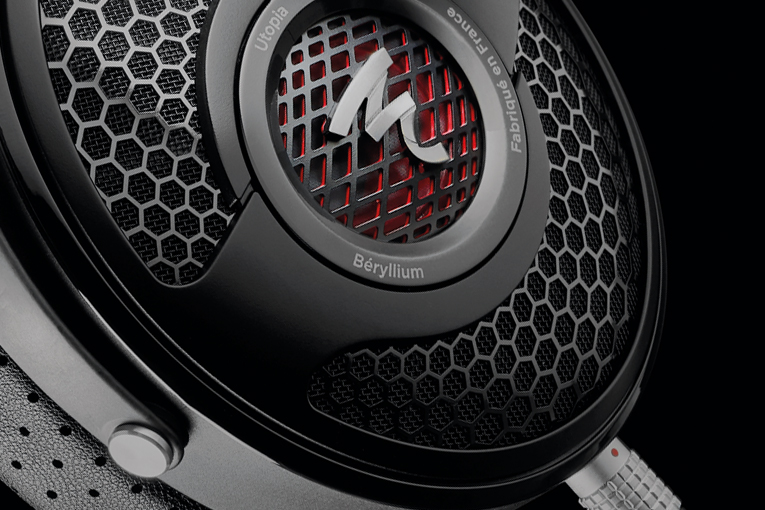
Before I go into comparing these with other headphones, here’s my interim take: the Utopia 2022s are perhaps the most neutral, “get out of the way of the music” headphones I’ve heard, even if they don’t have the dramatic spaciousness of some treble-boosted planar-magnetic models. (And that’s code for “HiFiMan.”)
Comparisons
There are a lot of headphones I wish I had on hand to compare with the Utopia 2022s, but I had to work with what I had—which were, to be sure, some excellent high-end, open-back designs, including the Sendy Peacock, Grado RS2x, and Audeze LCD-X headphones. The Audeze headphones were fitted with Dekoni earpads. And I chose that all-time classic of test tunes, Tracy Chapman’s “Fast Car” (Tracy Chapman, 16/44.1 FLAC, Elektra Records / Qobuz), which the scientists at Harman International (before whom audio was largely just a bunch of marketing B.S.) found to be the most consistently revealing track in their controlled testing experiments.
The Utopia 2022s sounded, easily, the most neutral of the bunch, with a seemingly perfect tonal balance. Many headphones make Chapman’s voice sound recessed on this, but with the Utopia 2022s, her voice was fairly up front, but still distant enough to have adequate left-minus-right information to get the reverb pumping. Because of the near-perfect tonal balance, the Utopia 2022s made “Fast Car” sound like Chapman had just fired the mediocre drummer who played on all the takes the other headphones seemed to be playing, and hired a really great drummer with whom the rest of the band just clicked.
The Sendy Peacocks sounded livelier in ways, with slightly more bass and treble, and somewhat less present midrange. The extra treble left them sounding slightly buzzy in the mids, and with less midrange energy, they added a bit of “cupped hands” coloration in the voice.
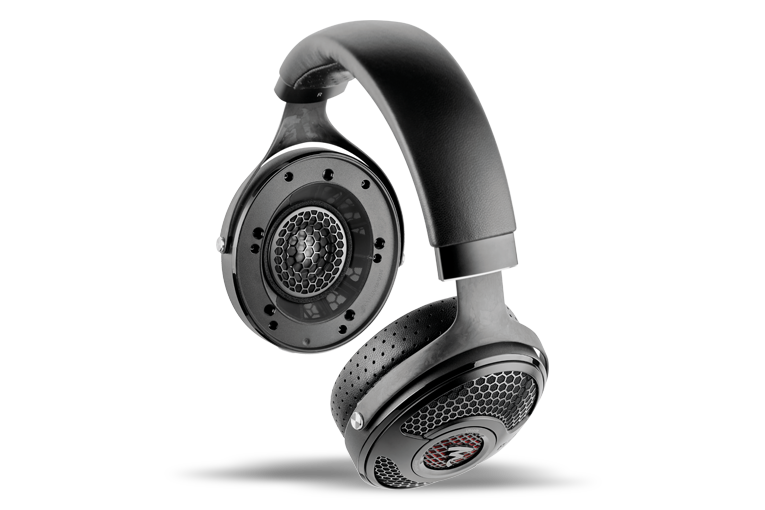
The Audeze LCD-X headphones sounded somewhat like the Utopia 2022s, but tilted more toward the bass. There was more oomph and punch in the bass (although, best as I could tell, no actual increase in energy), but the treble seemed dialed down by a few dB, which made the vocals seem comparatively soft and recessed.
Any experienced audiophile could predict that the Grado RS2xes would deliver the trebliest sound of this bunch, and they did. The RS2xes brought out the acoustic guitar strings and the hi-hat more than any of the other headphones, but they also made Chapman’s voice sound edgier.
I can’t really say which of these headphones you’d prefer—I don’t know your tastes or what direction you’re going in as an audiophile—but I am fairly confident that of these, you’d pick the Utopia 2022s as sounding the most neutral and natural.
Conclusion
The Utopia 2022s certainly rank among the world’s most expensive headphones, and I’d have to say they’re among the world’s best. They’re not perfect—they are a little soft on top, and they don’t sound as spectacularly spacious as a few competitors do—but I’d say from 12kHz on down (likely the range of hearing of most of the people who could afford these!), you cannot do better.
. . . Brent Butterworth
Associated Equipment
- Smartphone: Samsung Galaxy S10.
- Amplifier: Schiit Magnius.
- DAC: iFi Audio Zen DAC.
Focal Utopia 2022 Headphones
Price: $4999.
Warranty: Three years, parts and labor.
Focal
BP 374, 108 rue de l’avenir
42353 La Talaudière Cedex
France
Phone: (+33) 4-77-43-57-00
Focal Naim America
313 Rue Marion
Repentigny, QC J5Z 4W8
Canada
Phone: (800) 663-9352
Website: www.focal.com





